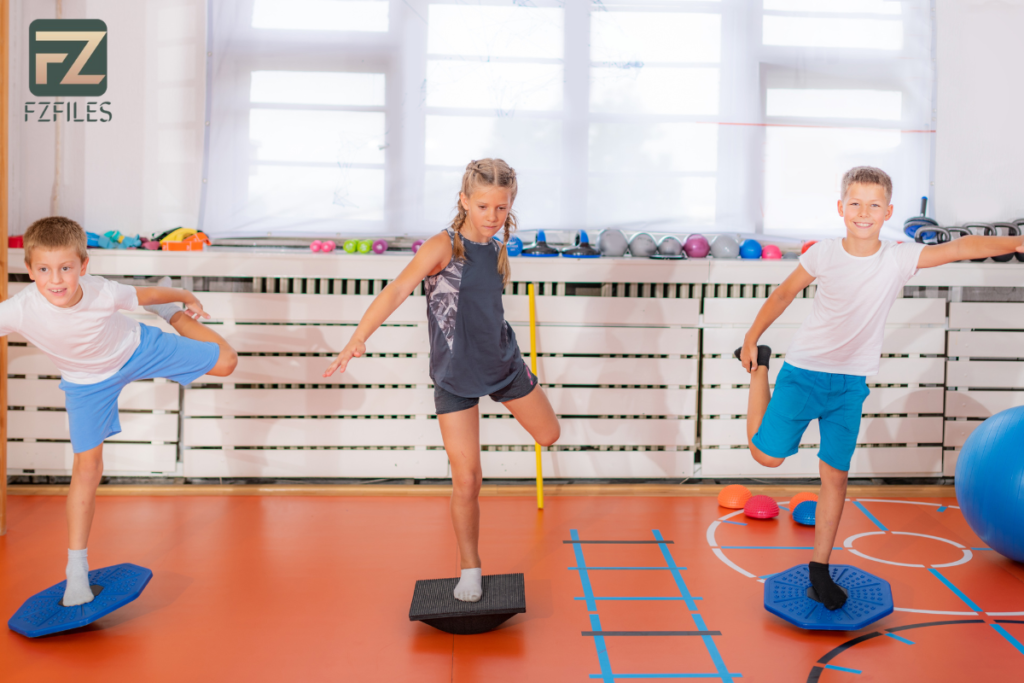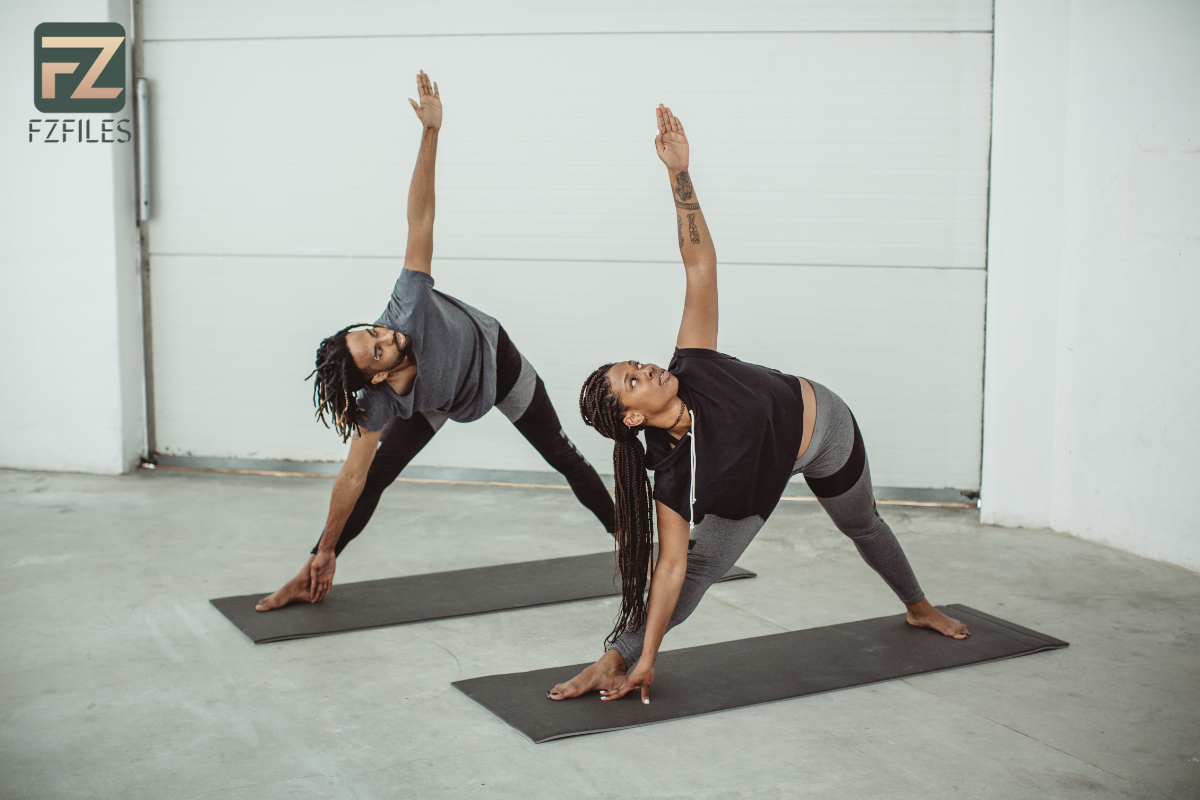Introduction to Balance and Coordination Exercises
In the realm of fitness and athletic performance, balance and coordination exercises play a crucial role. These exercises are not only vital for athletes but also for anyone looking to enhance their overall well-being. As we move into 2024, the focus on improving balance and coordination has intensified, driven by the understanding that these skills are fundamental for preventing injuries, enhancing performance, and promoting healthy aging.
Benefits of Balance and Coordination Exercises
Improved Athletic Performance
Balance and coordination are key components of athletic prowess. Athletes who excel in these areas can perform complex movements more efficiently and precisely. Whether it’s a soccer player navigating through opponents or a gymnast executing intricate routines, balance and coordination are indispensable.
Reduced Risk of Injury
One of the most significant benefits of balance and coordination exercises is reducing injury risk. By improving the stability of joints and enhancing proprioception (the sense of body position), these exercises help prevent falls, sprains, and other common injuries.
Enhanced Daily Activities
Balance and coordination exercises are not just for athletes. They are crucial for performing everyday activities such as walking, climbing stairs, and carrying groceries. Improved balance and coordination make these tasks easier and safer.
Better Posture and Stability
Good balance contributes to better posture and stability, reducing the strain on muscles and joints. This can help alleviate chronic pain and prevent the development of musculoskeletal problems.
Cognitive Benefits
Engaging in balance and coordination exercises also benefits cognitive function. These exercises require concentration, spatial awareness, and quick decision-making, which can enhance brain health and cognitive abilities.
Essential Balance and Coordination Exercises
Single-Leg Stand
The single-leg stand is a simple yet effective exercise for improving balance. Stand on one leg with the other leg raised off the ground. Hold the position for as long as possible, then switch legs. For added challenges, try closing your eyes or standing on an unstable surface.
Bosu Ball Exercises
Using a Bosu ball can significantly enhance balance and coordination. Exercises such as squats, lunges, and push-ups performed on a Bosu ball engage the core and stabilize muscles, improving overall balance.
Balance Beam Walk
Walking on a balance beam or a narrow surface can enhance coordination and balance. Focus on maintaining a steady gait and proper posture as you walk forward and backward on the beam.
Agility Ladder Drills
Agility ladder drills are excellent for improving coordination and footwork. Perform various movements such as high knees, lateral shuffles, and in-and-out hops through the ladder rungs to enhance coordination and speed.
Tai Chi
Tai Chi is a martial art known for its slow, controlled movements that improve balance, flexibility, and coordination. Practicing Tai Chi regularly can enhance proprioception and overall stability.
Stability Ball Exercises
Exercises performed on a stability ball, such as ball passes, planks, and seated leg lifts, engage the core and stabilize muscles, improving balance and coordination.

Proprioceptive Neuromuscular Facilitation (PNF) Drills
PNF drills involve dynamic movements that challenge balance and coordination. Examples include partner-resisted movements and dynamic stretches that enhance proprioception and neuromuscular control.
Yoga
Yoga poses such as Tree Pose, Warrior III, and Half Moon Pose improve balance and coordination. Regular yoga practice enhances body awareness, stability, and flexibility.
Designing a Balance and Coordination Workout Routine
Assess Your Current Fitness Level
Before creating a workout routine, assess your current fitness level. This will help you determine the appropriate intensity and complexity of exercises to include. Fledglings ought to begin with essential activities and steadily progress to further developed developments.
Set Clear Goals
Establish clear and realistic goals for your balance and coordination training. Whether you aim to improve athletic performance, prevent injuries, or enhance daily activities, having specific goals will keep you motivated and focused.
Include a Variety of Exercises
A well-rounded routine should include a variety of exercises that challenge different aspects of balance and coordination. Combining static holds, dynamic movements, and agility drills ensures comprehensive improvement.
Frequency and Duration
Aim to perform balance and coordination exercises at least three to four times a week. Each session should last between 20 to 30 minutes, depending on your fitness level and goals. Consistency is key to seeing progress.
Warm-Up and Cool Down
Always start your workout with a proper warm-up to prepare your muscles and joints for exercise and reduce the risk of injury. Similarly, cool down with stretching exercises to promote flexibility and recovery.
Sample Balance and Coordination Workouts
Beginner Balance and Coordination Workout
- Single-Leg Stand: 3 sets of 20 seconds per leg
- Balance Beam Walk: 3 sets of 10 steps forward and backward
- Tai Chi Movements: 3 sets of 5 minutes
- Stability Ball Seated Leg Lifts: 3 sets of 10 reps per leg
Intermediate Balance and Coordination Workout
- Bosu Ball Squats: 3 sets of 15 reps
- Agility Ladder Drills: 3 sets of 30 seconds per drill
- Yoga Tree Pose: 3 sets of 30 seconds per leg
- Stability Ball Passes: 3 sets of 15 reps
Advanced Balance and Coordination Workout
- Bosu Ball Push-Ups: 4 sets of 12 reps
- Single-Leg Deadlift: 4 sets of 12 reps per leg
- PNF Drills: 4 sets of 30 seconds per drill
- Yoga Warrior III: 4 sets of 45 seconds per leg
Expert Tips for Improving Balance and Coordination
Focus on Form and Technique
Proper form and technique are crucial for effective balance and coordination training. Engage your core muscles, maintain a neutral spine, and perform each movement with control and precision.
Progress Gradually
Gradually increase the difficulty of your exercises by adding resistance, reducing stability, or increasing the duration of holds. Moderate over-burden guarantees persistent improvement and forestall levels.
Incorporate Functional Movements
Functional movements that mimic daily activities or sports-specific actions can enhance balance and coordination. Examples include single-leg squats, lunges, and rotational movements.
Stay Consistent
Consistency is key to achieving and maintaining good balance and coordination. Incorporate these exercises into your regular fitness routine and make them a habit.
Listen to Your Body
Pay attention to your body’s signals and avoid pushing through pain or discomfort. If you experience any strain or injury, modify the exercises or take a break to recover.
Stay Hydrated and Nourished
Proper hydration and nutrition are essential for optimal performance and recovery. Drink plenty of water and fuel your body with a balanced diet rich in nutrients.
Seek Professional Guidance
If you’re new to balance and coordination training, consider seeking guidance from a fitness professional or physical therapist. They can help you design a personalized workout routine and ensure you’re performing exercises correctly.
By incorporating these balance and coordination exercises and tips into your fitness routine, you can enhance your overall athletic performance, reduce the risk of injury, and improve your daily activities. Stay consistent, focus on form, and enjoy the journey towards better balance and coordination in 2024!

[…] designed to increase muscle power. Commonly used by athletes to enhance performance, plyometric exercises are now widely recognized for their benefits across various fitness levels. In this comprehensive […]